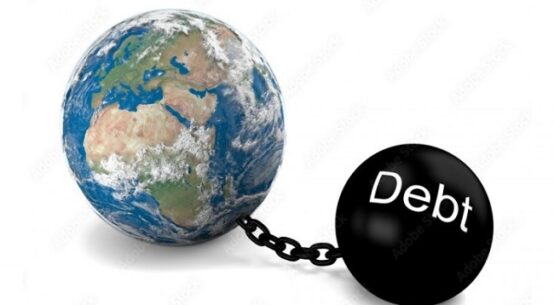
Inflation worries topped Ipsos’s What Worries the World survey in 2022 overtaking COVID concerns. The return of inflation caught major central banks, e.g., the US Federal Reserve (Fed), Bank of England, European Central Bank “off guard”. The persistence of inflation also surprised the International Monetary Fund (IMF). The return of inflation and its persistence exposed the poverty of the economics profession, unable to agree on its causes and required policy responses. It also exposed the profession’s anti-working class biases.
Inflation goof
Almost all major central banks as well as the IMF dismally failed to see the coming of inflation. In December 2020, the US Fed forecast that prices would rise by less than 2% in 2021 and 2022. It failed spectacularly when in December 2021, it estimated that inflation in 2022 would be just 2.6% even though prices were already rising by more than 5% a year.
The US Fed was not alone in failing to see inflation coming. The Governor of Australia’s central bank – the Reserve Bank of Australia (RBA) – was so confident of low inflation that he declared in March 2021 that the interest rate would remain at a historic low until at least 2024. Inflation in advanced economies during 2021 exceeded the average of forecasters’ expectations by around 5–8 percentage points. The IMF’s forecasts have badly and repeatedly undershot inflation.
There was a widespread view among most central bankers and leading economists that the price increases (or inflation) that began in mid-2021 were temporary, and price increases would slow or inflation would drift downwards in 2022. Some, of course, insisted otherwise, and wanted immediate anti-inflationary measures. Thus, policy confusion ruled.
Inflation phobia and dogma
Soon inflation phobia overtook and central banks were advised to act decisively with interest rate hikes even if it meant slowing the economy or a rise in unemployment. Exaggerated claims were made without evidence that not acting now would be more costly later.
References to rare episodes of hyperinflation were made to justify tough policy stances.
The dogmatic inflation hawks ignored the fact that, in most cases, inflation does not accelerate to become harmful hyperinflation, but remains moderate. They also ignored their own neo-classical macroeconomic model, which suggests small welfare loss from moderate inflation.
Notwithstanding the IMF’s Article IV preamble which provides that economic policies should aim to foster “orderly economic growth with reasonable price stability, with due regard to [country specific] circumstances”, a one-size-fits-all policy of steep interest rate hikes became the only medicine to be applied to achieve a universal inflation target of 2%, a figure plucked from thin air. Yet, central bankers and mainstream economists boast their credibility!
Inflation excuse for class war
Inflation is primarily an expression and outcome of conflicting claims over the distribution of national output and income, e.g., firms’ profit mark-ups vis-à-vis workers’ wages. Thus, no sooner inflation spiked early in the year due to slow adjustment of COVID-induced supply shortages to pent-up demand, exacerbated by war and sanctions, leading central bankers and mainstream economists found an excuse to weaponise economic policies against the working class.
Stoking the fear of wage-price spirals, they advocate the use of an interest rate sledgehammer to create unemployment and, in turn, discipline labour. This is despite research within the IMF and the Reserve Bank of Australia which found no evidence of wage-price spirals since the 1980s due to declines in labour’s bargaining power. Thus, Bloomberg headlined, “Fattest Profits Since 1950 Debunk Wage-Inflation Story of CEOs”.
Research conducted by the IMF also found increases in firms’ or corporations’ market power, resulting in higher prices and profit margins. Yet, the IMF does not think such factors “are contributing in any sizeable way to the current inflationary environment”. Instead, it justifies such fattening of profits on the ground that “they provide flexible buffers between general wage and general price increases” and that it is only a catching-up “after taking a hit in 2020”!
But no such compassion is extended to the working people who have lost their lives and livelihoods. The calls for “front-loaded interest rate hikes simply got louder. The Bank for International Settlements (BIS) warned, “With the prospect of higher wages as workers look to make up for the purchasing power they lost, inflation could be high for long”.
Labour a clear loser
Labour is a clear loser. Labour’s income share in the GDP has been in decline since the early 1970s. Casualisation, off-shoring, anti-union legislation and technological progress have greatly reduced labour’s bargaining power, while privatisation and dilution of anti-monopoly legislation hugely strengthened corporate power and their collusive anti-competitive behaviour. Meanwhile, CEO compensation packages swelled to obnoxious levels, rising 940% since 1978 in the US as opposed to a 12% rise for workers during that period. Profiting from the pandemic, CEO pay increased by 16% in 2020 when workers suffered, and to a record level in 2021.
Leading central bankers and mainstream economists conveniently created a dogma around a 2% inflation target to justify their anti-labour stance. The 2% inflation target has become a global norm akin to the law of gravity, even though it has no theoretical or empirical basis. The law of gravity differs depending on altitude, but the 2% target is said to be universal regardless of circumstances!
Collateral damage
Meanwhile, the advanced countries’ inflation fight is causing adverse spillover into developing countries. Higher interest rates have slowed the world economy, and triggered capital outflows from developing countries, thereby depreciating their currencies and lowering their export earnings.
Together, these are causing devastating debt crises in many developing countries, similar to what happened in the 1980s. The rating agency S&P estimates that central bank rate rises could land global borrowers with US$8.6t in extra debt servicing costs in the coming years.
Instead of providing genuine debt-relief, the G20 kicked the can down the road. As wealthy nations failed the poor countries during the pandemic, the IMF is moving to debt-distressed countries with conditionality-laden one-size-fits-all austerity packages. Thus, a Foreign Policy op-ed asked, “The International Monetary Fund: Holy Grail or Poisoned Chalice?”
Meanwhile, the chiefs of the World Bank and the BIS urged “supply-side” policies professed to increase labour force participation and investment. These are code words for further labour market deregulation, privatisation and liberalisation.
Anis Chowdhury is Adjunct Professor of Economics, Western Sydney University & University of New South Wales (Canberra campus). He served as a senior official at UN-DESA (New York) and UN-ESCAP (Bangkok). Prior to joining the United Nations, he was Professor of Economics at Western Sydney University.


